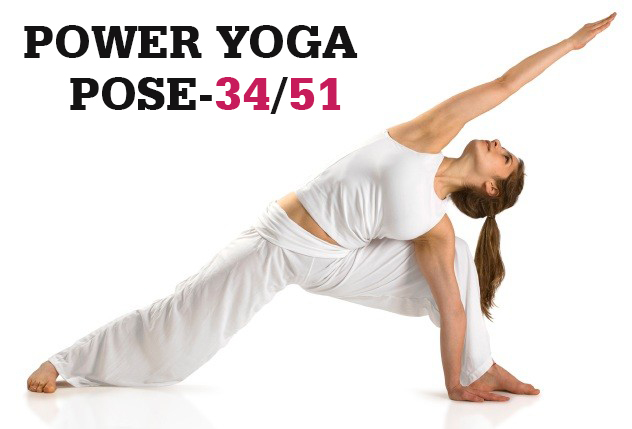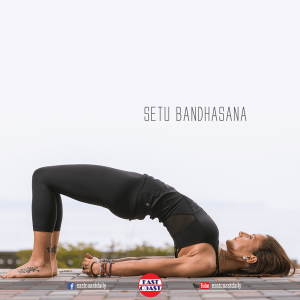
Setu Bandha Sarvangasana – Bridge Pose
Setu Bandha Sarvangasana is a common posture or asana. This asana gets its name from the Sanskrit words ‘Setu’, which means bridge, ‘Bandha’, which means a lock, and ‘Asana’, which means pose. This pose resembles the structure of a bridge, and therefore, it is named as such. This pose stretches your back, neck, and chest and relaxes your body.

How to do the Setu Bandhasana- Bridge pose?
- Begin the asana by lying flat on your back.
- Bend your knees and place your feet on the floor hip-width apart. Make sure that your ankles and knees are placed in a straight line.
- Let your arms rest beside your body, with your palms facing downwards.
- Inhale, and lift your back (lower, upper, and middle) off the floor. Roll in your shoulders, and make sure your chin touches your chest without you having to move it. Let your shoulders, feet, and arms support your weight.
- Firm up your buttocks as you tighten them. Make sure your thighs are parallel to each other and the floor.
- Interlace your fingers and push your hands harder to the ground to lift your torso higher.
- Hold the posture for at least a minute. Breathe slowly and deeply.
- Exhale and release the pose.
Benefits
- This asana helps to strengthen the muscles of the back. The stretch also helps to relieve the stress trapped in the back.
- This asana stretches and tones the neck, spine, and chest.
- Practicing this asana reduces depression, stress, and anxiety and calms the brain.
- The lungs are opened up, and thyroid problems are reduced.
- This asana also massages the digestive organs, thereby helping to improve digestion.
- This asana greatly benefits pregnant women and also helps alleviate menstrual pain and symptoms of menopause.
- It also aids high blood pressure, sinusitis, asthma, insomnia, and osteoporosis.
Drawbacks
- People who are suffering from a neck injury must either completely avoid this asana, or do it with a doctor’s permission under a certified yoga instructor.
- Pregnant women may do this asana, but not to the full capacity. They must do it under the guidance of a yoga expert. If they are in their third trimester, they must do this asana with a doctor’s consent.
- If you have back problems, you must avoid this asana.

Post Your Comments